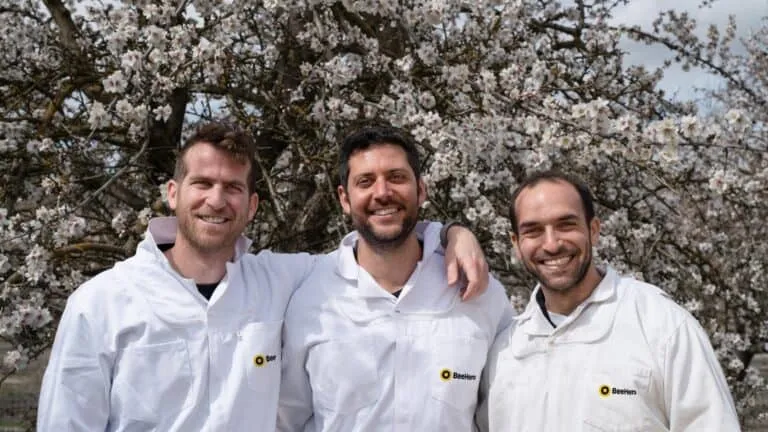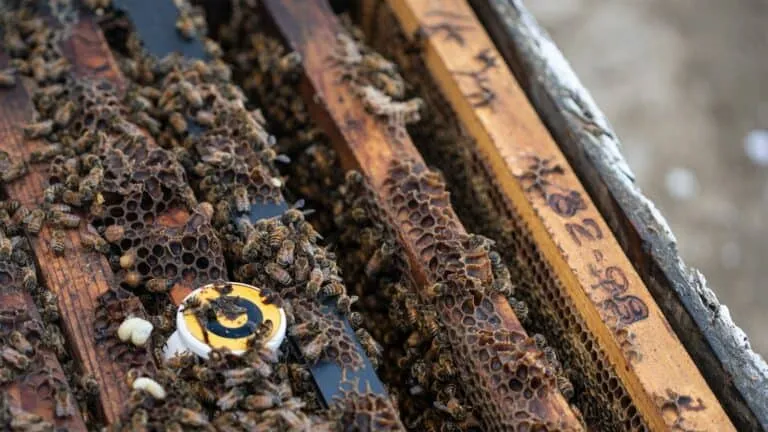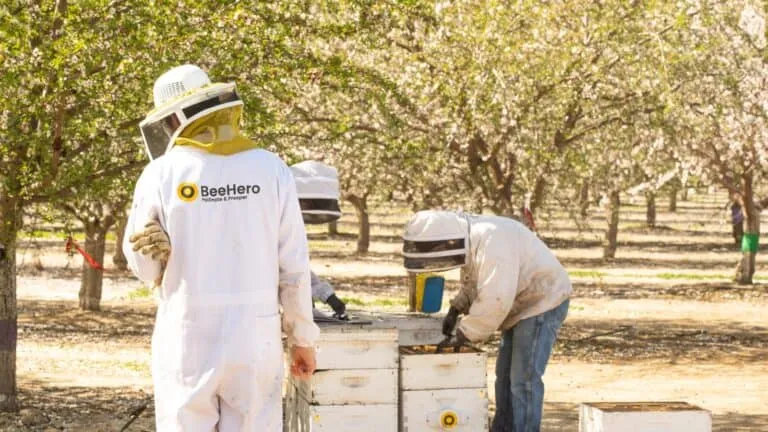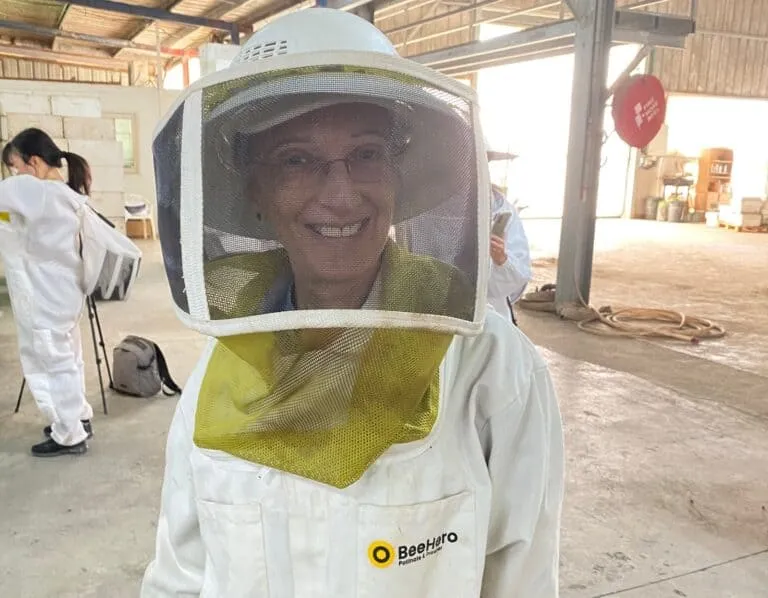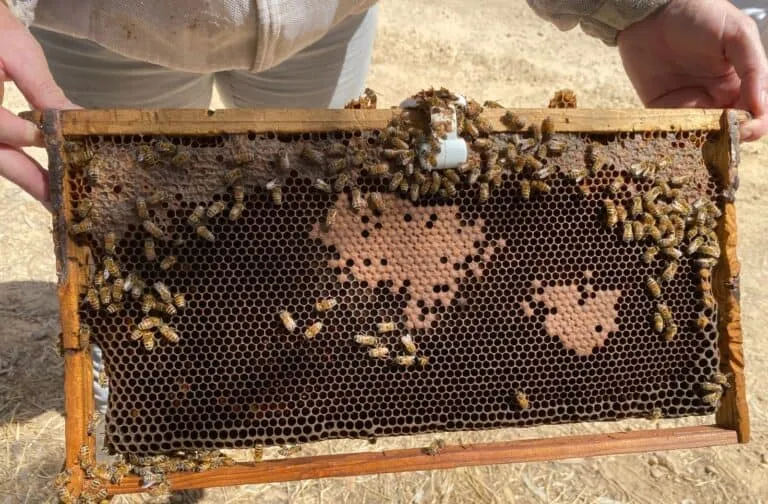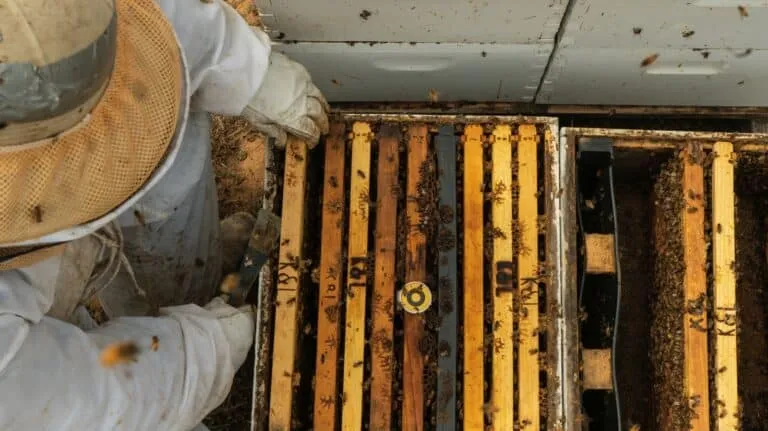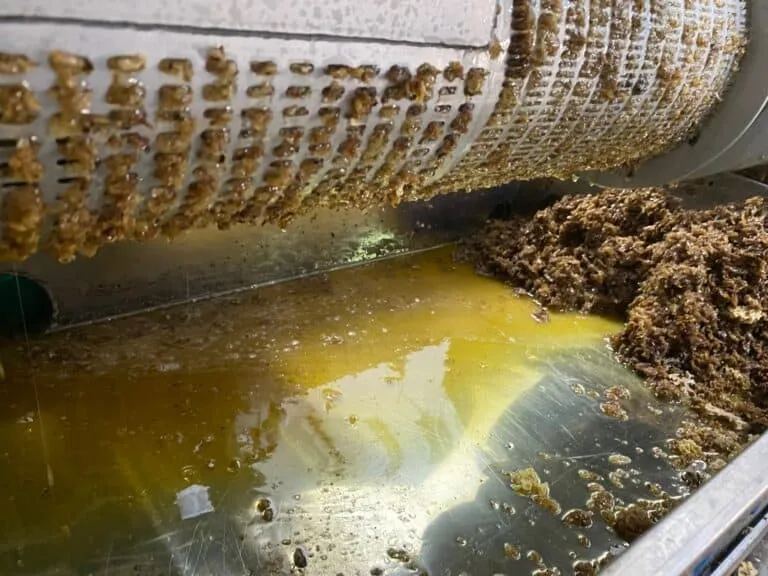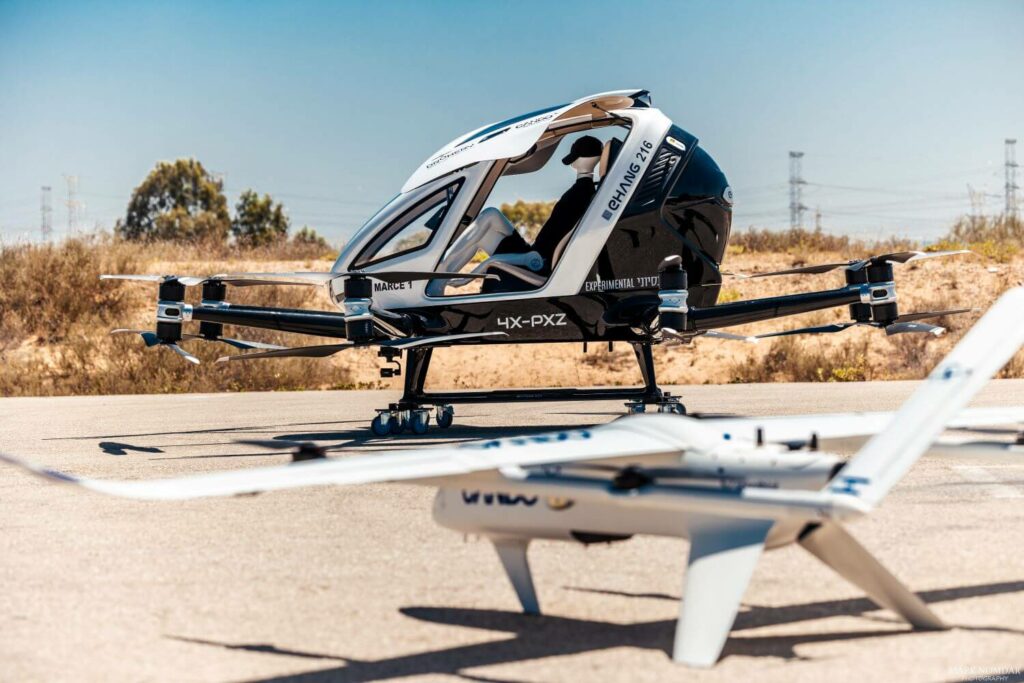Technion President Prof. Uri Sivan says his university could play a critical role in helping Israel rebuild after the war because of the unique talent it offers. He spoke with Israel Hayom.
In December, the Technion-Israel Institute of Technology will celebrate 100 years. Looking at the list of achievements over the years makes you realize how significant its contribution to the state’s development has been – and still is.
“For many years we were essentially the only engineering school in the country, and to this day we are the only technological university,” the Technion president, Prof. Uri Sivan, tells Israel Hayom in a special interview. “To a large extent, we shouldered the burden of founding the state on our shoulders, and over the years we have all reaped the rewards for this. Most of the civilian infrastructure in Israel today – roads, railways, water, desalination, agriculture – is the work of Technion faculty and alumni over the generations.”
The Israeli aerospace industry, still highly relevant today, has also developed over the years on the Technion’s shoulders, as have the various security systems. The four Nobel Prize laureates in chemistry and the 41 Israel Prize winners among Technion graduates attest to the quality of its education. “Engineers who graduated from the Technion were responsible for the development and production of the armored vehicles used by the IDF today, as well as all missile defense systems. To this day, 80% of the engineers working on the Iron Dome are our graduates. The microelectronics industry also started here, and this is just a partial list,” he says.
But beyond the technological feats, the Technion president makes sure to emphasize other no less important aspects promoted by the university under his leadership.
“After I was appointed president in 2019 I went on visits to different countries, and everywhere I went I was asked, ‘Tell me, what’s special about you?’ There are many very good technological universities – MIT, Stanford – but people feel that we have something different here and it took me some time to fully understand what they were talking about. Of course, we try to do the best science and give our students the best training – and a Technion degree is considered top tier in the world.
“But over time I realized another thing that makes this place unique, and that’s the fact that the security of the State of Israel, the economy of the State of Israel, and Israeli society are part of our mission, just like our mission is to do the best science and provide the best education. When I sit down in my office in the morning, those three things – security, economy, and society – comprise a major part of my considerations.”

President Sivan is keen to shed light on the Technion’s role in supporting Israeli society, which has been part and parcel of the place since its early days, as has been evident during the war.
“The Technion has a long tradition as an inclusive university, and this started with the founding fathers. In that sense, this is a place that welcomes everyone, and believes in equal rights, and ‘diversity’, it’s part of the principles, it appears in our constitution, which goes back many years. Another aspect of Technion pluralism is the increase in the percentage of female students over the years. That has been hard to do – in the first Technion classroom there were 16 men and one woman – but today the situation is one of parity.”
The fact that the Technion was established in Haifa, a city that is a symbol of tolerance and coexistence, is no coincidence and reflects the spirit of the academic institution since its founding. “Back when they were talking about establishing the Technion, in 1906, representatives of ‘Ezra’, a German organization that set up many schools in the country, came to Israel to look for a place for a technological university. There were two possible locations – Jerusalem, which was the largest Jewish settlement in the country, and Haifa, which had 20,000 residents, 2,000 of them Jewish. The organization’s people explained something that still holds true today – Jerusalem has too much ‘baggage’ because of its history, too much internal infighting among Jewish power brokers; so they chose Haifa, which has always been a very communal place, as it still is today. During the British Mandate, Jewish and Arab mayors of Haifa would alternate, and it was also very close to various industries, it is a very innovative city.”
Academia and industry – together
When Prof. Sivan talks about security and the economy as central components in the Technion’s mission (alongside the social issue), he also means the national challenge of rebuilding after the war.
“We need to think about how to move on from here, how to boost the economy and industry again,” he says. “It’s important to remember that the Technion is the main source of engineers, scientists, doctors, and architects, and we’re already looking ahead, thinking about how to really get this whole big system going after everything we’ve been through.

“The Technion has a very large role to play in emerging out of the crisis, beyond the security aspects. The engineers graduating from here are the ones pushing the industry forward, so we have a role in workforce training. Second – each year about 15 new companies are created at the Technion; one out of every 30 new companies founded in Israel is by Technion people, and it’s all ‘deep-tech’. The companies are founded by faculty members or students based on knowledge developed in labs here, and they raise funding from outside investors. We also have a tech transfer office – which is an entire system that allows the establishment of companies, including a licensing agreement whereby the technology is granted to the company for certain applications, and from there it continues on its own.
“The extensive system we have built here to enable all this starts with the entrepreneurship training we provide to our students with their studies. We have a center here called T-HUB (The TEchnion Hub for Entrepreneurship and Innovation), which is responsible for all entrepreneurship education and mentoring, including a lot of mentoring by our graduates.
“Afterwards, anyone who has an idea they want to develop can get help through several channels where they also receive guidance from successful mentors who have gone down this path. For example, we have a branch called T3 – Technion Technological Transfer – which assists researchers from the idea stage, with patents, support, investor search, and even strategy writing, and from there, it goes out into the world.
“In addition to the Technion’s role in driving the system forward in terms of human resources, ideas, training, and entrepreneurship, there is a very extensive system here of infrastructure worth hundreds of millions of dollars. It’s not just the machines that we have and industries can use; for example, we have a very advanced microelectronics center. Companies send people here and we give them the resources, and together we work and enable them to develop. This is very important for start-up companies that sometimes lack the relevant infrastructure needed to move forward.
“In light of everything I have mentioned, I have a very important message: The government must support this matter. I know the country has many needs, but looking forward, we have to figure out how we get out of here, how we go back to who we were, how we revive the start-up scene, and so on. The answer: Only through investing in universities. We still don’t know how the new budget will impact things, but the message is that it’s vital – ideas are born here, human capital comes from here, start-ups rely on us, as do the companies that spawned from us and other companies, it’s an insane powerhouse. Look at what’s happening around the Technion – very few universities have created an ecosystem around them like there is here, with MATAM high-tech park in Haifa, industrial zones in Yokneam and Migdal HaEmek, and collaborations with schools in the region. All this must continue in order to help us all rebuild.”
As an institution that is one of the important pillars of the Israeli industries in all its diversity, the Technion also ensures cooperation with various sectors through knowledge transfer and research agreements. Prof. Sivan noted that when he took office as president, he built a 10-year strategic plan whose central component is strengthening ties with manufacturers.

“If you look at where academia is going today, you can identify two main focal points – one in everything related to digital communication that is completely changing the way students receive knowledge and learn, and the second is the connection with industries. Once there was a separation – basic research in academia and applied research in the industries. That belongs to the past, and we are formulating new models for interaction between the two.
“So, for example, we created an entirely new academic position here of an industry research fellow. These are people who have been very successful and come here a few days a week, meet with students, engage in research, and teach; this is really a fusion of industry and academia. In fact, we expose students to the field, to what is happening outside, already during their studies.” Just as the Technion has set Israeli society throughout the years as an integral part of its activities, so it has been since its very first moments of the war. “On October 7, at around 10 am, we opened a situation room,” says Prof. Sivan about the contribution to civilians who found themselves refugees in their own country.
“We established the ‘Mutual Guarantee’ center for the Technion community and their families as well as to assist residents of the south and north and IDF soldiers. As part of this, dozens of initiatives are still active today, in addition to the extensive activity of hundreds of student volunteers. Since the beginning of the campaign, dozens of families and individuals who have evacuated from their homes in the north and south have been staying on campus – the dormitories, which were empty at the beginning of the war, were converted into housing for the evacuees who received everything they needed – from clothes to laptops.”
Among other things, the Mo’ed B – second-hand equipment store at the Technion – stepped up to the plate to help the students and evacuees and equipped them with everything they needed, free of charge. Students in the Department of Materials Science and Engineering cleared and arranged shelters in nearby Nesher, as part of the “Shelter City” project, and graduate students in the Faculty of Chemical Engineering also went out with the faculty dean to clear shelters in Haifa. This is just a partial list of the assistance provided by Technion people due to the security situation.
But the aid did not stop at the country’s borders, and in light of the rise in antisemitic manifestations and anti-Israeli rhetoric on campuses worldwide, students, alumni, and academic faculty studying abroad were invited to come and conduct research, teach, and study at Technion campuses in Haifa.
“We saw in many countries a wave of anti-Israeli and antisemitic protests, and unfortunately faculty members at many leading universities in the West, student organizations, and trade unions joined this wave,” says Prof. Sivan. “In light of the weak responses from a considerable number of presidents of leading universities in North America, Europe, and Australia, we realized that many Jewish and Israeli students and researchers were subjected to physical and verbal threats that interfered with their academic activities at those institutions. Against this background, and recognizing the Technion’s historic role in the history of the Jewish people, we announced a program for the rapid onboarding of students and faculty from around the world looking for academic refuge.”
A warm embrace for fighters
A significant contribution from the Technion is in IDF reserves, with about 2,500 of the 15,000 students enlisted as early as October 7, along with about 500 faculty and teaching staff. “I assume we still have over 1,000 who are still called up, and it’s important to understand how we cope with this fact and how we assist them when they return. There are a lot of officers here, a lot of combat unit veterans, it has always been like that. Many female students were also drafted, and a very high percentage of the women staffing the Iron Dome crews are reserve soldiers from the Technion, including those serving in key positions.
“It is important for us that each of our reservists know that the entire Technion has joined the cause and committed to supporting them. Thus, for example, together with friends of the Technion in Israel and around the world, we set up a special relief fund that allowed us to transfer an immediate grant of 6,000 shekels to each of them. Along with a series of support measures we have already taken, they receive an economic support package and some peace of mind. We have also prepared academically to make their return to on-campus studies as easy as possible. The Technion also published an updated payment schedule for dormitory fees, which will ease the burden on students, especially those serving in the reserves.”
About 80 faculty members and students at the Technion lost family members who were murdered on October 7 or killed during the war, some still have family members among the captives. Two Technion students fell in the Gaza battles – Staff Sergeant (Res.) Master Sgt. (res.) Dov Moshe Kogan and Captain (res.) Denis Krokhmalov Veksler. Kogan, a Shaldag fighter, was 32 when he fell. He completed his degree at the Faculty of Mechanical Engineering and was a graduate student at the faculty, as well as a third generation at the Technion – his late father, Meir, was a graduate of the Faculty of Aerospace Engineering and was involved in developing the Iron Dome, and his late grandfather, Avraham, was one of the founders of the faculty. Kogan left behind his wife Shaked and three children. Krokhmalov Veksler, who was 32 when he fell, was about to start his first year of studies at the Faculty of Aerospace Engineering. He was killed while serving as an officer in the Yahalom combat engineering unit.
“Many reservists from the Technion were injured, and we make sure to accompany and support them,” says Prof. Sivan. “For example, there is a student who is recuperating, and we send a taxi every day to bring him to campus and take him back so he doesn’t miss classes. Since the beginning of the war until now we have been in touch with many military units, assisting however we can. One of the interesting units is the Carmeli Brigade. This is a brigade established in 1948 during the War of Independence whose core was Technion students and faculty. We have remained in contact with them over the years, we mark Memorial Day together every year and adopted them in the early days of the war.
“Many units needed food at the first stages of the war, and the Technion became a logistics hub for that. The student union also rallied wonderfully, as did the academic and administrative staff. Copious amounts of food, military equipment, and medical supplies were shipped from here. The volunteering spirit of everyone has been amazing and inspiring, people simply came to help. As soon as others saw our extensive activity, more and more requests for assistance began to arrive and we addressed their needs, each and every one of them.”





